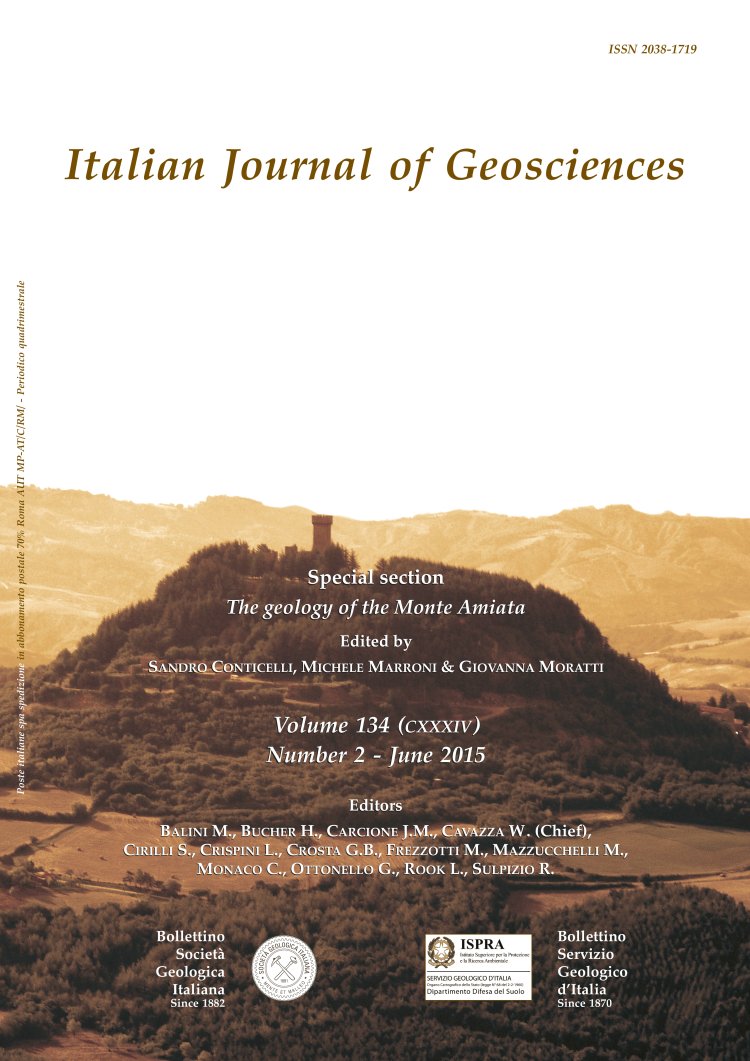
Geochemistry and Sr-Nd-Pb isotopes of Monte Amiata Volcano, Central Italy: evidence for magma mixing between high-K calc-alkaline and leucititic mantle-derived magmas
Sandro Conticelli (1), (2), Elena Boari (1), Luca Burlamacchi (3), Francesca Cifelli (4), Francesco Moscardi (1), Marinella A. Laurenzi (5), Luca Ferrari Pedraglio (6), Lorella Francalanci (1), (2), Marco G. Benvenuti (1), (2), Eleonora Braschi (2) & Piero Manetti (3)
(1) Università degli Studi di Firenze, Dipartimento di Scienze della Terra, Via Giorgio La Pira, 4 - I-50121, Firenze, Italy. E-mail sandro.conticelli@unifi.it
(2) Istituto di Geoscienze e Georisorse, CNR, Unità Operativa di Supporto di Firenze, Via Giorgio La Pira, 4 - I-50121, Firenze, Italy.
(3) Decolores Mármores e Granitos, Rodovia Cachoeiro x Frade, São José do Frade, S/N, km 11 CEP: 29.306-610, Cachoeiro de Itapemirim, ES, Brazil.
(4) Università degli Studi di RomaTre, Dipartimento di Scienze, Largo San Leonardo Murialdo, 1 - I-00146, Roma, Italy.
(5) Istituto di Geoscienze e Georisorse, CNR, Area della Ricerca, Via G. Moruzzi, 1 - I-56124, Pisa, Italy.
(6) Universidad Nacional Autonoma de Mexico, Centro de Geociencias, Campus Juriquilla, Blvd. Juriquilla 3001, 76230, Queretaro, Qro., Mexico.
Abstract
Keywords
ultrapotassic igneous rocks, Monte Amiata volcano, Central Italy.
Get Full Text Supplementary Material